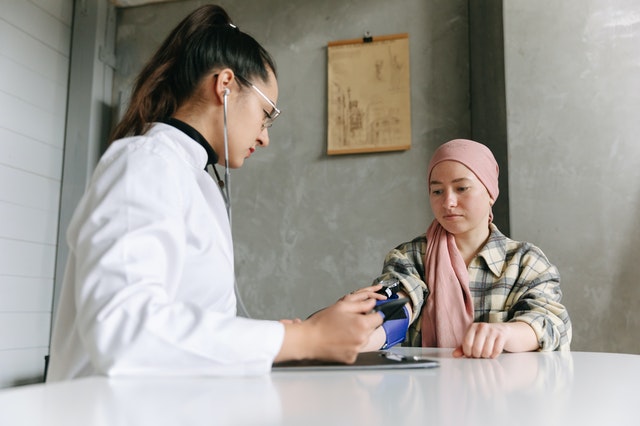Lab tests are essential for staying healthy, but some tests are more critical for women than others. Here is a list of the top lab tests that all women should do regularly and take in an urgent care clinic.
By knowing what these tests are and why they’re important, you can be proactive about your health and take steps to stay well. So let’s get started!
1. Transvaginal Ultrasound
A transvaginal ultrasound is a particular type of medical scan that obtains images of a woman’s reproductive organs. The scan can measure the size, shape, and structure of the uterus and ovaries to see any abnormalities present.
Doctors recommend a transvaginal ultrasound about once a year for women over 22. A transvaginal ultrasound is especially important if you’ve recently started having periods. Doctors use transvaginal ultrasounds to diagnose and treat any abnormalities in your reproductive system early on to prevent long-term problems or disease.
During the ultrasound, the gynecologist or sonologist cleans the skin around your genital area with an antiseptic and then inserts a lubricating gel into your vagina. The probe of the transvaginal ultrasound wand is also covered in a lubricant and directly inserted into your vagina. This allows it to obtain the best possible images of the inside of your reproductive organs.
2. Pap Smear
A pap smear is a screening test that uses lab analysis to check for abnormal changes in the cervix cells, part of the female reproductive system. These changes can be early warning signs of developing cervical cancer. As such, having regular pap smears done is essential to help doctors catch any potential problems before they develop into something more serious.
For a pap smear, your doctor scrapes cells from the cervix and places them onto a glass slide. These cells are then sent to a lab for analysis under a microscope for abnormalities that could indicate cancerous tumors or pre-cancerous lesions.
A pap smear should be done once three years, starting at 21 until 65. It may be more frequent if the results of the previous exams are suspicious of the risks of developing conditions like cervical cancer are high.
3. Mammogram
A mammogram is a medical imaging test used to detect breast cancer in women. Mammograms use the same technology that traditional x-rays use but lower radiation levels.
A mammogram uses a two-dimensional X-ray of the breast. The x-ray then creates an image transmitted to a computer, where a trained radiologist analyzes it for any signs of breast cancer.
The images created can be examined from all different angles and magnified to give the best chance of detecting any abnormalities. Based on these images, your doctor will then diagnose and classify any areas that look abnormal. If anything suspicious shows up, your doctor may recommend a biopsy to establish the diagnosis and determine what treatment is necessary.
Doctors encourage women between 40 and 44 years old to start having mammograms. Doctors recommend mammograms for females 45 to 54 years old and once or twice a year for individuals 55 and above.
4. Breast Ultrasound
A breast ultrasound generates high-resolution images of your breasts. The goal is the same as with mammograms, which is to evaluate abnormal areas in your breast tissue and try to determine if they’re cancerous or not.
During breast ultrasound, the doctor applies gel directly to the skin. The doctors then use a handheld device that contains a transducer probe is pressed against the skin. The transducer emits high-frequency sound waves, which pass through your breast tissue and create an image on a monitor.
You should have a breast ultrasound once a year alongside regular mammograms as supplemental screening.
5. Cholesterol Test
Although more men die from heart disease, this condition is one of the highest killers of women. You are more likely to die from this than cancer.
A cholesterol test is a blood test that can help diagnose and monitor heart disease. A cholesterol test takes a sample of your blood to measure the levels of low-density lipoprotein (LDL) or “bad” cholesterol. It also counts total cholesterol and triglycerides-a type of fat found in your blood.
Based on these results, your doctor can diagnose and monitor any issues with elevated cholesterol levels in your blood. High cholesterol may signify that you’re at risk for heart disease. It could also signify other related conditions such as atherosclerosis, coronary artery disease, and cardiovascular disease.
The CDC recommends you have your cholesterol checked every four to six years. You need them more regularly if you belong to high-risk groups. High risk includes having a family history of diabetes, high cholesterol, and cardiovascular disease.
Lab tests are an essential part of staying healthy. By knowing which ones you need and when to take them, you can catch any health concerns as early as possible.
